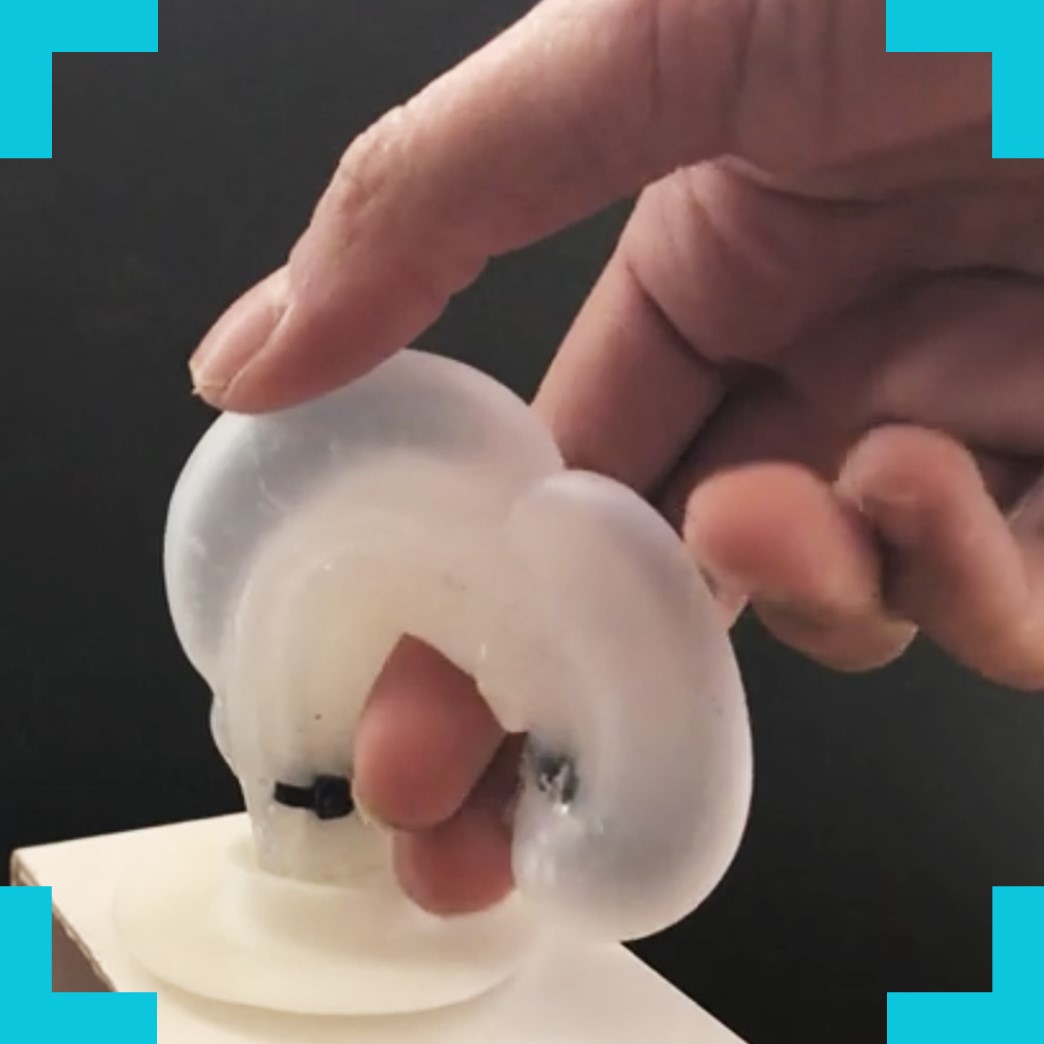Prehension Blooms: using soft robots to include isolated people in creative spaces
Can soft-bodied robots help us to combat isolation and loneliness?

Research has shown that older people experience decreased loneliness, increased self-esteem and improved group relations when they participate in theatre (Bernard & Rickett, 2017). That said, the same people face barriers when it comes to the technologies that allow people to participate in activities remotely.
The issue hits younger people as well: 40% of 16-24 year olds report often feeling lonely.
With robotics increasingly being used to combat loneliness, an interdisciplinary team of researchers assembled to ask important questions. Can we employ robotics to encourage people from different social groups to take part in creative activities remotely?
What did the project involve?
Prehension Blooms contributed to tech initiatives that helped people to experience cultural spaces.
The team worked directly with older and younger people experiencing loneliness and social isolation. Together, they co-designed a kit of mobile robots and investigated how their movement can directly influence robots. Their input informed the making of a mixed community of robots, which featured in a live performance.
Two co-creation workshops were held at Bristol Beacon, with the intention of asking: “how can I be present and connect with other bodies in a space where I am not?”. During the workshops, two dancers and 15 isolated older and younger people used building block devices to construct novel robot morphologies.
Who are the team and what do they bring?
- Hemma Philamore (Engineering, Mathematics University of Bristol) has a particular interest in environmental robots – machines developed to interact robustly and benignly with living things, found in real-world environments, through characteristics such as softness, bio-degradability and energy self-sustainability.
- The project expanded Adrienne Hart’s (Neon Dance) extensive experience developing dance works that incorporate digital and interactive elements such as laser light, infrared technology and moving image (Neon Dance, Empathy, 2016 & The Intention, 2012), expanding the range of technologies integrated with live performance to enhance the audience experience, liveness and togetherness.
- Helen Manchester (School of Education, University of Bristol) explores the potential to access learning outside schools. Dr. Manchester works with others to explore cutting-edge creative digital technologies with groups who might generally feel excluded from the digital environment.
What were the results?
The Prehensions Bloom project disseminated their findings at two Pervasive Media Lunchtime Talks. They also made appearances at the Bristol Beacon in September and October 2022. Details of these appearances can be read on the Bristol Beacon site Prehension Blooms: where AI robotics and dance combine | Bristol Beacon and explored further in these videos.
Prehension Blooms: Dance Rehearsal (youtube.com)
Prehension Blooms: Robotics (youtube.com)
More behind the scenes footage can be found on the Neon Dance Website Prehension Blooms – behind the scenes — neon dance
Prehension Blooms was also brought to the Oxford Science + Ideas Festival in 2022 Prehension Blooms — OVADA. The Oxford Research Centre in the Humanities also interviewed Adrienne Hart in ‘Prehension Blooms and RoboTIPS’ Prehension Blooms and RoboTIPS | TORCH | The Oxford Research Centre in the Humanities.
A review of Prehension Blooms was written by Beatriz Do O for A Youngish Perspective REVIEW: Prehension Blooms – A Young(ish) Perspective

